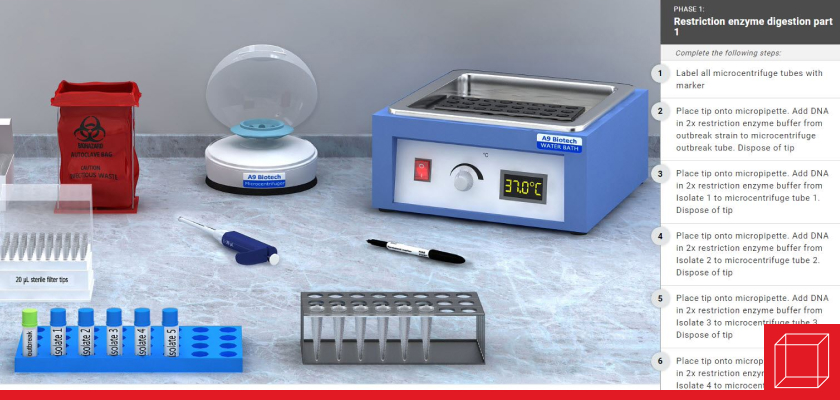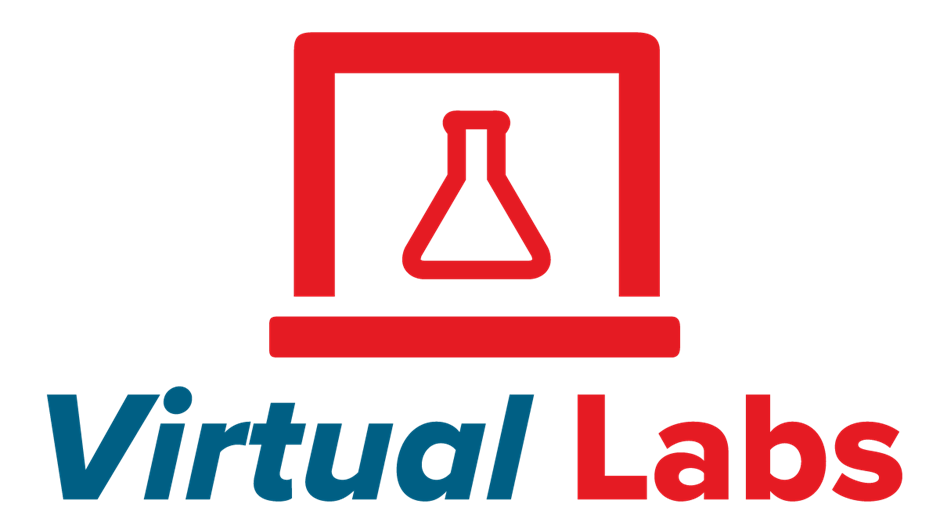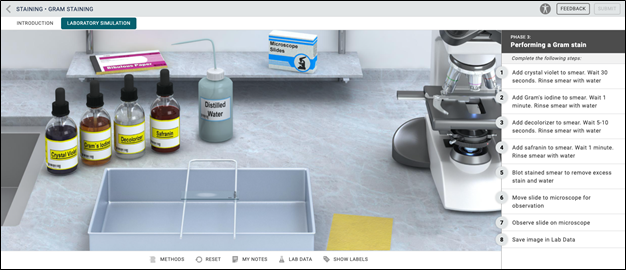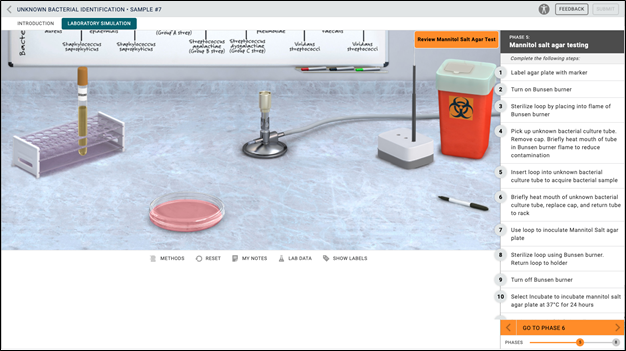Virtual Labs: To the Rescue and Beyond...
Learn more about Connect Virtual Labs
Published January 1, 2021


2020 has certainly been one of the toughest years to be a college educator. From last minute switches to remote learning in the spring to the demand for newly developed online summer courses to attempting to meet the needs of students while constantly adjusting to local public health mandates last fall, it has been challenging and exhausting for many of us. I have never been more thankful for a wealth of quality digital resources. Surprisingly, some of the resources that I have utilized to deal with the challenges posed by the COVID-19 pandemic have not only rescued my courses, but I have seen the power they can have for student success beyond the current education situation.
The digital resource that impressed me the most was Connect Virtual Labs, which was implemented in some way into all of my courses this summer and fall. Students in my fully online course used Connect Virtual Labs exclusively whereas students in my hybrid courses were offered the virtual labs as an optional supplement to their on-campus lab experiences. All students took the same final lab practical at the end of the semester, and a review of the data showed there was no difference between the class average in the fully online and the hybrid courses! Both groups had met the learning outcomes regardless of how they were exposed to the lab exercises. But here’s another really exciting part . . . hybrid students that used the virtual labs reported and demonstrated a more significant level of preparation and bench lab success than those that chose not to complete them before arriving to class! If you have not yet seen Connect Virtual Labs, I highly encourage you to take a closer look for multiple reasons.
Exactly what is Connect Virtual Labs? This digital resource is a fully online lab solution that can be used as a lab replacement, preparation, supplement, or make-up lab. They can also be used as a learning activity that bridges the gap between lab and lecture. These simulations help a student learn the practical and conceptual skills needed, and then check for understanding and provide feedback. With adaptive pre-lab and post-lab assessment available, instructors can customize each assignment to meet the needs of students in face-to-face, hybrid, or fully online courses.

Here are some ideas for implementing Connect Virtual Labs in future courses, even when classes finally return to normal.
Virtual Labs as a Lab Replacement:
Now that our college has developed a fully online microbiology course, there is no doubt it will continue to be offered long into the future to increase enrollment. During the development of our online course, we did pilot the use of at-home lab kits but found that students were not always successful alone with the hand-on experiences even with great preparation videos offered by instructors. These actually led to greater student frustration and less success on the final lab practical, and the cost is significantly more to students. While I have been very reluctant to see a move to fully online lab courses, I now do feel able to teach and assess each student’s learning to the same level as on-campus lab time with the use of Connect Virtual Labs. By having an online pre-lab assignment, a virtual “hands-on” simulation, and an online post-lab assignment, I can provide the tools for students to learn and demonstrate mastery of the learning outcomes that I have always expected in our courses.
Virtual Labs for Bench Lab Preparation:
Do you have students that aren’t confident walking into a laboratory setting? I have always felt the challenge of students being underprepared for lecture and lab. By having students do the simulations prior to face-to-face lab time, I have found they are able to understand what lab equipment they will be using and what to expect from the lab activity. They waste less lab resources and find more success in obtaining valid results. Recently, I have offered these as optional resources, but plan to take it a step further and assign a completed simulation as a pre-lab entrance ticket.

Virtual Labs as Active Learning in Lecture Courses:
To bridge the gap between lab and lecture in face-to-face classes, these simulations could be used as an active learning activity. Because Virtual Labs works on mobile-friendly browsers and was designed for screens the size of a small tablet, it is a digital tool that I can be include easily an as activity during lecture time. Students could be assigned into pairs or small groups to work these simulations together, providing great opportunity for students to collaborate and discuss the process and outcomes of the simulation. Another idea is to have students verbally guide me through the simulation as a way to increase student engagement and interaction during a whole class lecture.
Perhaps the class has covered a specific topic in lab weeks prior but are just now getting to that topic in the lecture, or it will be a week or two before students cover this concept in lab? This is a perfect opportunity to integrate these concepts into to my lecture by assigning a simulation as a way to reinforce and review, or preview, these concepts.
Virtual Labs as a Make-up Lab:
For students that have to miss class for valid reasons or for whole campus closures, it is difficult, if not impossible, to re-schedule or offer alternative opportunities for students to learn the lab material they missed. By allowing students to do the virtual lab in its place, even if only for for their own self-study, this provides a way for students to meet lab outcomes that otherwise would be completely lost.
Virtual Labs for Accessibility:
Connect Virtual Labs were designed from the onset to meet standards for accessibility. They are operable by keyboard navigation and with a screen-reader, offering quality options for students with accommodations.
Get Creative!
With the Virtual Labs as an assignment type in your Connect course, you are bound to find other ways to utilize these lab simulations in your microbiology course, so have fun, and please share with us how you are using them! Send us an email at tamara.hodge@mheducation.com
For more information and updates to the Virtual Labs please visit: https://www.mheducation.com/highered/connect/virtual-labs
